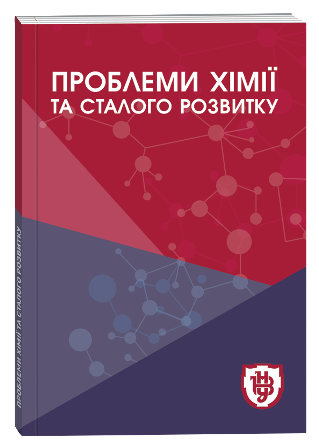THE GROUNDS OF MATHEMATICAL MODEL OF PROGNOSTICATION OF MEDIUM-SIZED CITY SUSTAINABLE DEVELOPMENT
DOI:
https://doi.org/10.32782/pcsd-2022-2-10Keywords:
economic-ecological systems development, mathematical models, medium-sized cities, prognostication.Abstract
The analysis having been done gives evidence of the fact that every city is socially, economically, ecologically, geographically unique and inimitable as to its substance. Accordingly, the model of its sustainable development is based on different outer and inner factors which determine their development and which are and will always be specific and individual. That`s why the elaboration of the model of sustainable development prognostication of medium-sized cities including Rivne has become urgent. The basis of sustainable development prognostication of the city is the achieved level of the development of social, economic, ecological spheres of its vital activity, proportionality and balance of these spheres functioning, taking into account the preconditions of their perspective development. The research and prognostication of the sustainable development of medium-sized cities were carried out in the following three stages: primary, analytical and calculation, final. The algorithm of the structure of mathematical models for determination the indices of social, economic and ecological spheres development of the cities assumes the realization of the following structural elements: making regressive and corrective analyses, control of the adequacy of mathematical models, making prognosis of the development of these spheres and integral index of the city sustainable development. It is ascertained that the values of the indices of the city social, economic and ecological spheres development are stipulated by the indices stimulants and destimulants and are deseribed by mathematical models which have the form of multifactor linear regressins with the coefficient of determination from 0,841 to 0,921. Aimed at the improvement of the level of city development within the period of the year 2025, it is projected to improve 2 indices of social sphere, 3 – economic, 2 – ecological in Ivano-Frankivsk, 3 indices of social sphere, 2 – economic, 2- ecological in Lutsk, 5 indices of social sphere, 4 – economic, 3 – ecological in Melitopol, 4 indices of social sphere, 3 – economic, 4 – ecological in Rivne. All these will allow Ivano-Frankivsk to reach the high level of development (0,75), for Lutsk – 0,619, for Melitopol – 0,594, for Rivne – 0,679 average level of their socio-economic-ecological systems development.
References
Прогнозування соціально-економічного розвитку району : питання теорії і методології / за ред. Є. І. Бойко. Львів : МАН України. Інститут регіональних досліджень, 2005. 234 с.
Моделі і методи соціально -економічного прогнозування / В. М. Гаєць та ін. Харків : «Інжек», 2005. 396 с.
Бойко Є. І., Грита Я. В. Проблемні питання прогнозування розвитку виробництва в регіоні. Регіональна економіка. 2004. № 2. С. 36−45.
Петрик О. І. Половньов Ю. О. Аналіз чинників інформації прогнозування в Україні. Економіка прогнозування, 2003. № 1. С. 86−103.
Кондіус І. С. Алгоритм прогнозування соціо-еколого-економічного розвитку регіону. Відтворення господарського комплексу регіону: методологія, механізми, інструменти : матеріали міжнародної наук.-практ. конф. Чернівці : Книги ХХІ. Випуск 7. Т1, 2007. С. 86-90.
Анализ и прогнозирование розвития региона / под ред. Н.Г. Чумаченко. Київ : Наукова думка, 1991. 211 с.
Герасимчук З. В., Кондіус І. С. Теоретичні і прикладні засади прогнозування стійкого розвитку регіону : монографія. Луцьк : Надстир’я, 2010. 412 с.
Ковальчук П. І. Моделювання і прогнозування стану навколишнього середовища. Київ : Либідь, 2003. 208 с.
Системний аналіз і моделювання у розв’язанні проблем сталого розвитку територій / С. З. Поліщук та ін, Дніпропетровськ : Поліграфіст, 2001. 133 с.
Ляшенко І.М. Економіко- математичні методи і моделі сталого розвитку. Київ : Вища школа, 1999. 236 с.
Робертс Фред С. Дискретные математические модели с приложениями к социальным, биологическим и экономическим задачам. М. : Наука, 1986. 494 с.
Єріна А. М. Статистичне моделювання та прогнозування : навчальний посібник. Київ : КНЕУ, 2001. 170 с.
Ляшенко І. М. До методології еколого-економічного моделювання. Економіка України, 1999. № 6. С. 69−78.
Макроекономічне моделювання та короткострокове прогнозування / за ред. І. В. Крючкової. Харків : Форт, 2000. 336 с.
Севастьянов Л. И. Индикаторы социально-экономического развития регионов: методологические подходи к разработке. Регион: экономика и социология, 1996. № 1. С. 44−58.
Карпінський Б. А., Божко С. М. Продуктивність і сталий розвиток економіки. Львів : Логос, 2004. 274 с.
Вітлінський В. В. Моделювання економіки : навчальний посібник. Київ : КНЕУ, 2005. 408 с.







